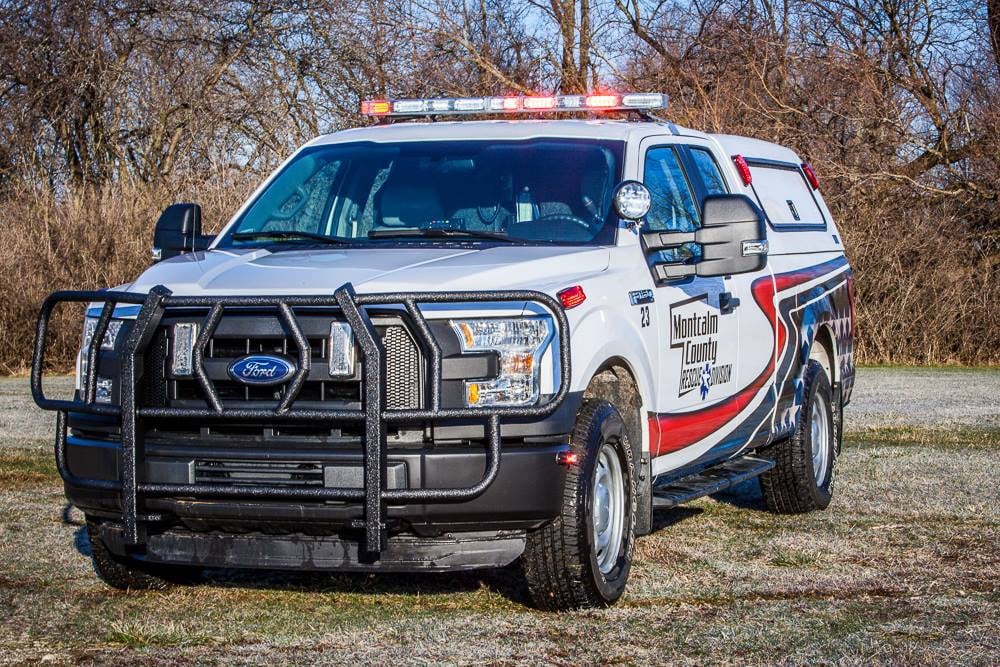4 Must-have Data Points for Dispatch-Billing Alignment and Maximum Reimbursement
Road Safety: How to Get the Most Out of Your Driver Feedback System
“Black Monday” is a day that changed the way we at Montcalm County Emergency Services (MCES) approach safety within in our organization
Was this information valuable?

“Black Monday” is a day that changed the way we at Montcalm County Emergency Services (MCES) approach safety within in our organization. One of our first responder rescue trucks was responding emergency to assist at a mission-critical incident (MCI) when it collided with another vehicle; the accident killed two people. This tragic incident eventually led us to believe that two things needed to happen:
- We needed Road Safety in all of our vehicles. We had implemented Road Safety in all of our ambulances back in 2007, but did not have them in our rescue trucks.
- We needed to actively manage the program to see results.

About MCES
First of all, let me tell a little about who we are. Montcalm EMS services a rural area outside of Grand Rapids, Michigan. We operate 10 ambulances (up to 5 units in service at a time) and 10 first responder rescue units with a call volume of around 9,000.
Our rescue trucks typically sit in the on-call responder’s driveway, so they can respond directly from their home and provide service until the ambulance arrives. The ambulances are system status and are spread out across our 720 square miles of our county. All of our ambulances and rescues are dispatched by GPS coordinates, which sends the closest unit(s) to the call. Response time for us is usually between 12 and 13 minutes, but because we cover such a large county, responses can take up to 30 minutes. Our fleet drives more than 600,000 miles a year between hospital transfers and emergency calls.
I feel the two-way communication puts trust in the system when employees know that they can do the right thing without being “punished” for it.
Actively Managing the Real-Time System Led to Changed Behavior
After Black Monday, we were able to secure the funds necessary to put Road Safety in all of our vehicles, including upgrading the ambulances from RS-3000 to RS-4000. We wanted to go a step further to make sure each of our employees were truly buying into the system. I was tasked to actively manage the system, so I began pulling reports monthly and posting them on a board so everyone could see the results (previously we only pulled a report if an incident occurred). We investigate all high speed and force events by reviewing location of the event via the Road Safety GPS data. Investigation is critical because it’s quite possible the Road Safety system dings them for slamming on their brakes, but in actuality, they did so to avoid hitting a deer. I remove any points associated with those types of reported incidents, because I don’t want to punish anyone for doing the right thing and avoiding an accident. I feel the two-way communication puts trust in the system when employees know that they can do the right thing without being “punished” for it.
We’ve seen great success so far. One reason is because we incentivize safe driving by providing a yearly bonus for all drivers who drive above a level five. Monthly reports that are posted showing events, driving level, miles driven, and estimated bonus year to date provide up-to-date encouragement to drive safely. Safe Driver Gold uniform pins for Level 10 drivers are also a bonus for those who show a commitment to safety at the highest level. It’s something they can be proud of.
The cost was higher before Road Safety was installed and then again before it was effectively managed. Before Road Safety, a set of brakes would last about 20,000 miles.
Road Safety Reduces Maintenance Costs
Around 300,000 miles is a lot of miles to put on any vehicle – and considering the miles are on an ambulance, and mileage doesn’t accurately account for wear and tear of the engine running for hours idling in a parking lot between calls – it’s not surprising that our fleet would be costly to operate. The assumption of 300,000 miles would be the maintenance costs associated with brakes, engines, transmissions, and other wear and tear parts that a vehicle must go through to operate safely and effectively.
The cost was higher before Road Safety was installed and then again before it was effectively managed. Before Road Safety, a set of brakes would last about 20,000 miles. Before Road Safety, it was assumed that the motor would have to be rebuilt at least once and transmission would have to be replaced in the five-year life cycle of the truck. After Road safety, we average 80,000 miles between brake replacement, and schedule tune ups at 170,000, and transmission rebuilds around 200,000. The savings more than paid for the devices in just a few years, and the peace of mind of knowing that vehicle operators are driving safer and are less likely to be the cause of a tragic event.
Related Posts
How EMS Agencies Can Reframe Need and Refocus Resources With Geospatial Analytics
How To Minimize Radio Chatter and Reduce Guesswork With Smarter Dispatch Resource Management
ZOLL Pulse Blog
Subscribe to our blog and receive quality content that makes your job as an EMS & fire, hospital, or AR professional easier.
ZOLL Pulse Blog
Subscribe to our blog and receive quality content that makes your job as an EMS, fire, hospital, or AR professional easier.




